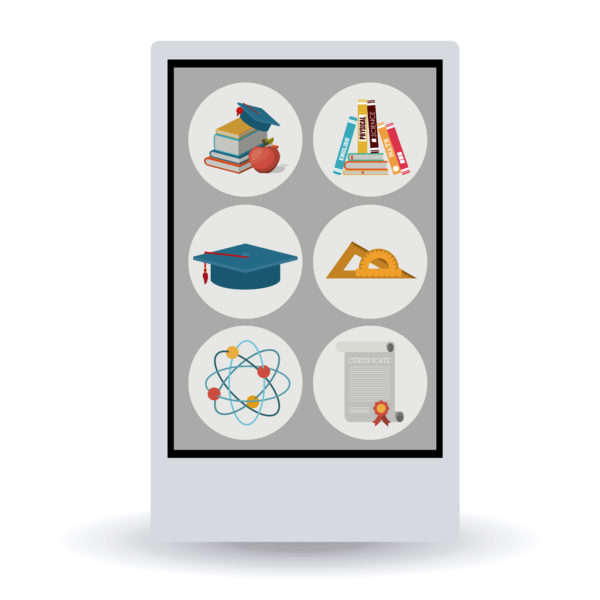As open educational resources (OER) grow in popularity, school leaders are tasked with identifying the best way to find, organize and use these resources.
But that process can be overwhelming, to say the least. As a result, many education leaders rely on best practices and success stories from other districts to guide the process.
During a CoSN webinar focused on using effective OER use, a panel of educators shared their experiences and offered insight on OER’s impact on education. Here, we’ve gathered their responses to critical questions on OER use and implementation.
1. How does shifting to digital resources change teaching and learning?
“It changes it dramatically,” said Andrew Marcinek, chief information officer at Worcester Academy. “I think the entire shift in pedagogy is something we’re looking at here, in ways in which we incorporate project-based learning, competency-based models and blended models.” Once those models and philosophies are established, the next step is to shift to the digital resources that support those models, he said.
“This is also a reexamination of what a teacher is in a classroom. More of a facilitator of learning. OER really allow for that to happen, and also allow students to explore more resources that are relevant and at their levels,” Marcinek said.
(Next page: Four more important OER questions)
“The shift to digital resources by itself is not a strategy,” said Lenny Schad, chief technology information officer in the Houston ISD. “This is a part of the journey, and so without the proper support, both from a technology perspective, a curriculum and leadership perspective, and also from the student side–how do [these groups] get used to using and learning with digital textbooks when they used to have paper textbooks?”
OER’s impact on teaching and learning is part of a bigger issue, namely a strategy for changing the culture of instruction inside a district.
To achieve that culture change, each support department within a district must understand its role in making that change happen, which is something Schad said his district aspires to do. Technology departments should focus on reliable, scalable networks; curriculum departments should ensure digital resources are aligned to and fit into the district’s instructional strategy, and school leaders should strive to ensure the culture change is successful.
2. How do you break silos between the instructional and technology departments?
Cross-departmental collaboration is key, said Grenita Lathan, chief academic officer with Houston ISD. “We work together as a team, and as team members we hold each other accountable. We meet regularly and align our tasks,” she said.
“There has to be a level of understanding around what can be done today, and then developing a roadmap to the future,” Schad said. “We make sure expectations are aligned. We will not be successful unless we work together. Communication really is the key to this–it’s repurposing people’s responsibilities, changing roles, and continually evaluating your processes.”
“Technology and instruction should never be disparate and should never be seen as different entities,” said Marcinek. “The focus should always be on learning. There’s never a way in which you make technology the center of anything. We’re looking at learning–period.”
3. Who should be involved in selecting digital resources?
“Almost every stakeholder in a school should be involved in this decision and in the strategic planning for the curation, organization, and implementation of OER,” Marcinek said. He added that the U.S. Department of Education’s Go Open district launch packet offers resources and examples from other districts that are scaling up OER use and moving away from traditional textbooks.
“At the end of the day, this is about making it easy for the teacher,” Schad said. “Making it streamlined means they have a lot of resources in the learning object repository at their disposal.”
4. What should districts keep in mind as they choose digital resources?
“Too much can be overwhelming for teachers and principals,” Lathan said. “We streamline content into a one-stop shop. We’re making sure it’s not overwhelming.”
“Always keep that end user in mind when it comes to what you’re providing and how they’re going to use it,” Schad said. “Look at how content is going to be displayed in your object repository. Different providers will give you their content in different ways. It’s about coming up with what your expectations are for the content and how it will sit inside your system and be used.”
“One thing to keep in mind is that it’s going to take time,” Marcinek said. “We’re still in the infancy of this shift. We’re changing the medium by which we deliver content, we’re taking the pedagogical framework and flipping it on its head. This is a mindset shift and a cultural shift.”
5. How do you combine digital resources from different sources, especially combining OER and proprietary resources?
Having the right learning management system (LMS) can help educators manage.
“Our LMS helps us search and rate resources so teachers can sort through the learning objects we have,” Lathan said.
“Teachers want a good resource that’s aligned to standards,” Schad said. “The integration of proprietary resources versus OER can vary dramatically. I think the focus has to be what the resources are that you’re bringing into the system, and how they’ll be leveraged and used inside the ecosystem.”
“I think teachers want high-quality, efficient resources, and resources they can have autonomy to adapt and personalize to how their students will learn,” Marcinek said. “That’s the key point–are we creating new efficiencies for our educators?”
- Friday 5: Virtual field trips - April 26, 2024
- Google, MIT RAISE launch no-cost AI training course for teachers - April 26, 2024
- 4 ways to support work-based learning - April 23, 2024

